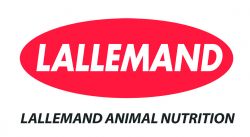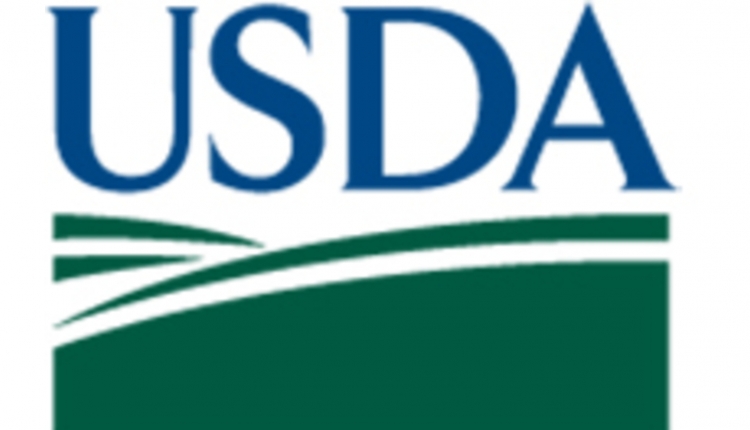The information below has been supplied by dairy marketers and other industry organizations. It has not been edited, verified or endorsed by Hoard’s Dairyman.
Mycotoxins are produced by specific molds, which cannot be completely be avoided in the process of growing and storing crops for feed. Often, mycotoxin testing is performed after animals’ exhibit reduced performance or health problems — meaning producers are already dealing with the financial effects. To make matters more difficult, mycotoxin content is not necessarily related to the amount of mold seen, Hall advises.
Researchers have found that, when ingested, some mycotoxins can cause lactic acid to build up. This can result in Sub Acute Ruminal Acidosis (SARA). SARA is a sustained period of time with lowered pH levels in the rumen. When SARA occurs, the animal’s ability to use the ration efficiently is impaired and can lead to other, more serious, health problems like laminitis.1
“SARA is simply an occupational hazard for the modern dairy cow, and mycotoxins are just one of the many reasons it can occur,” Hall says. “The costs from SARA are estimated at $1.12 per cow daily,2,3 which can quickly add up.”
Mycotoxins can accumulate on plants in the field, during harvest, storage or feedout of silage. To reduce exposure, the first step is to reduce or eliminate mold growth in the field and then during silage production. Mold growth can occur in hot spots of ensiled feeds where there is air present. This is typically in poorly sealed surface layers of ensiled forages.
“Proper silage management is key to reducing the presence of all kinds of molds, including those that produce mycotoxins,” Hall notes. “Plus, there are great benefits to good silage management beyond preventing mycotoxin production, including improved dry matter recovery and better quality feedstuffs. I never recommend feeding moldy silage, but avoiding spoiled silage cannot completely protect animals from mycotoxins.”
If contaminated feed manages to reach the feed bunk, it’s important for animals to have optimal rumen function. Producers can include a research-proven active dry yeast (ADY) probiotic in the ration to help achieve this goal.
“ADY probiotics like Levucell® SC <http://lallemandanimalnutrition.com/en/united-states/our-products/product-details/levucell-sc/dairy/> that include the strain Saccharomyces cerevisiae CNCM I-1077 have a high capacity to increase pH and fiber digestibility in the rumen,” Hall notes. “Probiotic feed additives can help improve rumen function and increase fiber digestion. This can help avoid reduced production due to a number of herd health challenges, including mycotoxins.”
To learn more about how Levucell SC can help improve rumen function, visit http://www.saratheelephant.com/.

Ruminants are thought to be more tolerant of mycotoxins than many other species. However, it can be risky to estimate how much mycotoxin exposure a herd can withstand without extensive testing, warns Tony Hall, MSc MSB, PAS, Technical Services – Ruminant, Lallemand Animal Nutrition.
“Mycotoxins can be the source of several important herd health and production problems ranging from reduced feed intake to suppressed immune response,” Hall says. “As livestock producers, we put so much effort into avoiding problems like these. It’s just a financially sound decision to manage, and prevent, mycotoxins before contaminated feed hits the bunk.”Mycotoxins are produced by specific molds, which cannot be completely be avoided in the process of growing and storing crops for feed. Often, mycotoxin testing is performed after animals’ exhibit reduced performance or health problems — meaning producers are already dealing with the financial effects. To make matters more difficult, mycotoxin content is not necessarily related to the amount of mold seen, Hall advises.
Researchers have found that, when ingested, some mycotoxins can cause lactic acid to build up. This can result in Sub Acute Ruminal Acidosis (SARA). SARA is a sustained period of time with lowered pH levels in the rumen. When SARA occurs, the animal’s ability to use the ration efficiently is impaired and can lead to other, more serious, health problems like laminitis.1
“SARA is simply an occupational hazard for the modern dairy cow, and mycotoxins are just one of the many reasons it can occur,” Hall says. “The costs from SARA are estimated at $1.12 per cow daily,2,3 which can quickly add up.”
Mycotoxins can accumulate on plants in the field, during harvest, storage or feedout of silage. To reduce exposure, the first step is to reduce or eliminate mold growth in the field and then during silage production. Mold growth can occur in hot spots of ensiled feeds where there is air present. This is typically in poorly sealed surface layers of ensiled forages.
“Proper silage management is key to reducing the presence of all kinds of molds, including those that produce mycotoxins,” Hall notes. “Plus, there are great benefits to good silage management beyond preventing mycotoxin production, including improved dry matter recovery and better quality feedstuffs. I never recommend feeding moldy silage, but avoiding spoiled silage cannot completely protect animals from mycotoxins.”
If contaminated feed manages to reach the feed bunk, it’s important for animals to have optimal rumen function. Producers can include a research-proven active dry yeast (ADY) probiotic in the ration to help achieve this goal.
“ADY probiotics like Levucell® SC <http://lallemandanimalnutrition.com/en/united-states/our-products/product-details/levucell-sc/dairy/> that include the strain Saccharomyces cerevisiae CNCM I-1077 have a high capacity to increase pH and fiber digestibility in the rumen,” Hall notes. “Probiotic feed additives can help improve rumen function and increase fiber digestion. This can help avoid reduced production due to a number of herd health challenges, including mycotoxins.”
To learn more about how Levucell SC can help improve rumen function, visit http://www.saratheelephant.com/.


